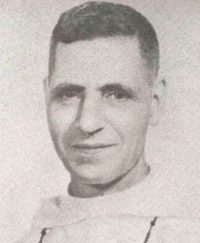A college bus is rented to carry passengers to Tayabas. Many provincial folks want to go to their provinces, but transportation is lacking, as well as gasoline and alcohol. Most of them are bound to Bicol, while others are hopping from island to island up to Cebu, Negros or Iloilo. Another route in this virtual tour is by way of Batangas, from where the travellers would hire a “parao”. After ten or twelve days at sea, and after escaping from the sharks and the steel birds of the air, they would finally arrive at some port in the South. It is a picturesque and exciting journey.
I know a number of persons who attempted this venture. Some arrived, others returned dead from hunger or fatigue. How many perish in the attempt, no one can tell.
Not only adventurous young ones and strong men but also women and seminarians from the University have embarked on such an odyssey, spurred by the desire to be reunited with their families and escape the threat of hunger in Manila. Blood is indeed strong in bringing about reunions during wartime.
Both the Japanese army in Luzon and the American forces in the Visayas give passage to these fugitives, letting them cross the lines without difficulty.
